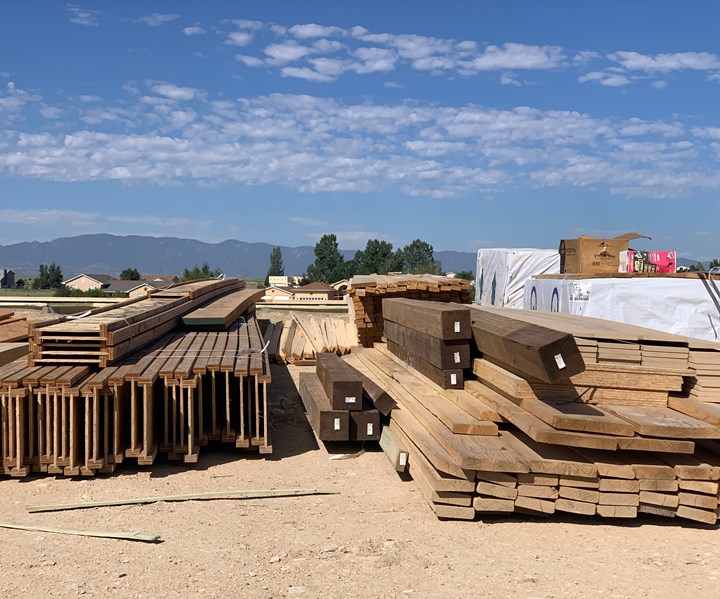Ingenious Composites in Modern Building Projects
Ingenious Composites in Modern Building Projects
Blog Article
Opening the Environmental Advantages of Recycled Composites in Building And Construction and Layout
In the world of construction and design, the application of recycled compounds holds significant promise for enhancing sustainability methods and reducing environmental impact. The shift towards a much more sustainable future in these markets hinges on unlocking the full capacity of recycled composites.

Environmental Impact Decrease
The decrease of ecological impact through using recycled composites in construction and design plays a vital function in sustainable practices. By including recycled compounds into building materials, the building and construction market can considerably decrease its carbon impact and add to a much more environmentally friendly future. These sustainable materials, made from repurposed plastics, timber fibers, or other recycled elements, use a practical alternative to traditional building and construction materials without endangering on quality or longevity.
Recycled composites assist draw away waste from land fills and reduce the need for extracting resources, thus preserving natural resources. In addition, the production process of these composites frequently eats less power and discharges fewer greenhouse gases contrasted to creating virgin products (composites). This shift in the direction of using recycled composites not just minimizes ecological harm yet also advertises a circular economic situation by encouraging the reuse of materials that would certainly otherwise be disposed of
Waste Minimization
With a concentrate on minimizing waste in building and layout, the integration of recycled compounds supplies a sustainable option to minimize ecological impact. Waste minimization is a critical element of lasting techniques, and using recycled composites provides a chance to achieve this objective efficiently. By using products that have actually currently served their first purpose, such as recycled plastics or redeemed timber fibers, the building and style industries can dramatically decrease the quantity of waste created and sent out to landfills.
Recycled composites have the potential to divert substantial quantities of waste from traditional disposal methods, contributing to a much more circular economic situation where sources are made use of successfully. Additionally, the manufacturing process of recycled composites typically takes in less energy and creates less exhausts compared to virgin materials, additionally lowering the ecological impact of building and construction and layout jobs.
Implementing waste reduction methods with the consolidation of recycled compounds not just assists in preserving natural deposits however likewise promotes a more sustainable technique to building and developing for a greener future.
Energy Preservation
Including recycled composites not only lessens waste in building and construction and design but additionally plays a crucial function in boosting power conservation methods within the market. The use of recycled composites in building and construction can substantially add to energy preservation with various methods. The production of virgin products usually calls for considerable power inputs, whereas using recycled compounds consumes less energy, therefore minimizing overall energy intake. Furthermore, Visit This Link including recycled composites can add to much better insulation buildings in buildings, minimizing the need for extreme home heating or cooling, and subsequently decreasing energy use for environment control. Additionally, the light-weight nature of many recycled composites can bring about lighter structures, needing less energy for transport and installment. By promoting making use of recycled compounds in construction and design, the market can make considerable strides in the direction of accomplishing power performance and decreasing its carbon footprint, eventually adding to an extra lasting built setting.
Carbon Footprint Reduction
Enhancing sustainability methods through the use of recycled compounds in building and design significantly reduces the carbon impact of the market. By integrating recycled materials into the manufacturing of compounds, the need for virgin resources lowers, bring about reduced energy intake and greenhouse gas exhausts related to typical manufacturing processes. This decrease in carbon footprint is crucial in combating environment modification and promoting an extra eco pleasant method to construction and layout.
The carbon footprint reduction attained via the adoption of recycled composites straightens with the global push in the direction of sustainable methods and the decrease of commercial emissions. Eventually, by focusing on the assimilation of recycled compounds, the industry can make considerable strides in lowering its carbon footprint and contributing to an extra lasting future.
Sustainable Future
The integration of recycled compounds in building and construction and layout not only addresses immediate ecological issues but additionally lays a solid structure for a sustainable future in the sector. By including recycled composites right into building products and products, the building and construction and design fields can substantially reduce their dependence on virgin sources, causing a more circular economy. This shift in the direction of sustainability is important for mitigating the ecological impact of conventional building and construction practices, which commonly result in high degrees of waste generation and resource exhaustion.

Final Thought
In verdict, recycled compounds supply substantial ecological advantages in building and construction and design by reducing environmental impact, lessening waste, saving power, lowering carbon footprint, and advertising a lasting future. Embracing using recycled compounds can add to a much more environmentally-friendly approach to building and design, ultimately leading to a more lasting and greener future for all.
The decrease of ecological effect through the usage of recycled compounds in building and construction and style plays a critical duty in sustainable methods.With a focus on minimizing waste in building and construction and style, the integration of recycled compounds uses a sustainable solution to lower environmental effect. By promoting the use of recycled compounds in building and layout, the sector can make significant strides in the direction of accomplishing energy performance and minimizing its carbon footprint, ultimately adding to a more lasting built setting.

Report this page